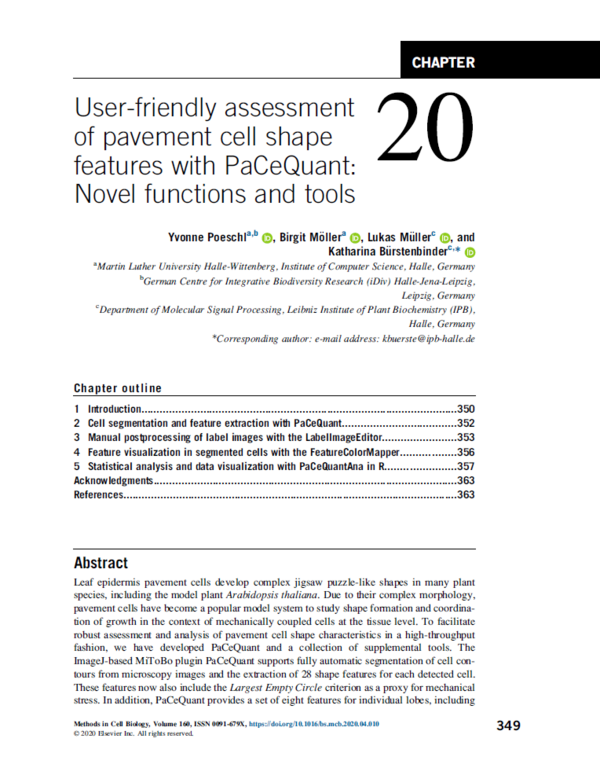New features and instructions for PaCeQuant published.
Researchers from the IPB, MLU and iDiv have recently published a method chapter on their software PaCeQuant for analysis of pavement cell shapes, in which they also introduce newly developed features of PaCeQuant.
Leaf epidermis pavement cells develop complex jigsaw puzzle-like shapes of interlocking lobes and plant scientists study them to understand shape formation and coordination of growth. To perform high-throughput automated recognition and analysis of pavement cell shapes from microscopy images, the Halle-based team of researchers developed the ImageJ-based MiToBo plugin PaCeQuant a few years ago. So far, the tool could measure 28 cell shape features. In this method chapter, the researchers introduce new additional measuring functions and plugins and describe their usage.
As of now, PaCeQuant’s output of cell shape features includes the 'Largest Empty Circle' criterion as a proxy for mechanical stress and a set of eight features describing individual lobes. Furthermore, PaCeQuant has been enhanced with the LabelImageEditor for user-friendly manual postprocessing in case the automated process erred, e.g. due to poor image quality. In addition, the researchers released the FeatureColorMapper tool for user-friendly visualization of feature values across cell regions. For statistical analysis and presentation, PaCeQuant has been complemented with the R package PaCeQuantAna, which provides statistical analysis functions and supports the generation of publication-ready plots in ready-to-use R workflows.
For further information on MiToBo, PaCeQuant and related tools, please refer to https://mitobo.informatik.uni-halle.de/index.php/Applications/PaCeQuantToolset and http://mitobo.informatik.uni-halle.de/index.php/Main_Page.
Original publication:
Poeschl Y, Möller B, Müller L, Bürstenbinder K. Chapter 20 - User-friendly assessment of pavement cell shape features with PaCeQuant: Novel functions and tools, In: Methods in Cell Biology, Anderson CT, Haswell ES, Dixit R (eds.), Academic Press, Vol. 160, 2020, 349-363, ISBN 9780128215333, https://doi.org/10.1016/bs.mcb.2020.04.010.



